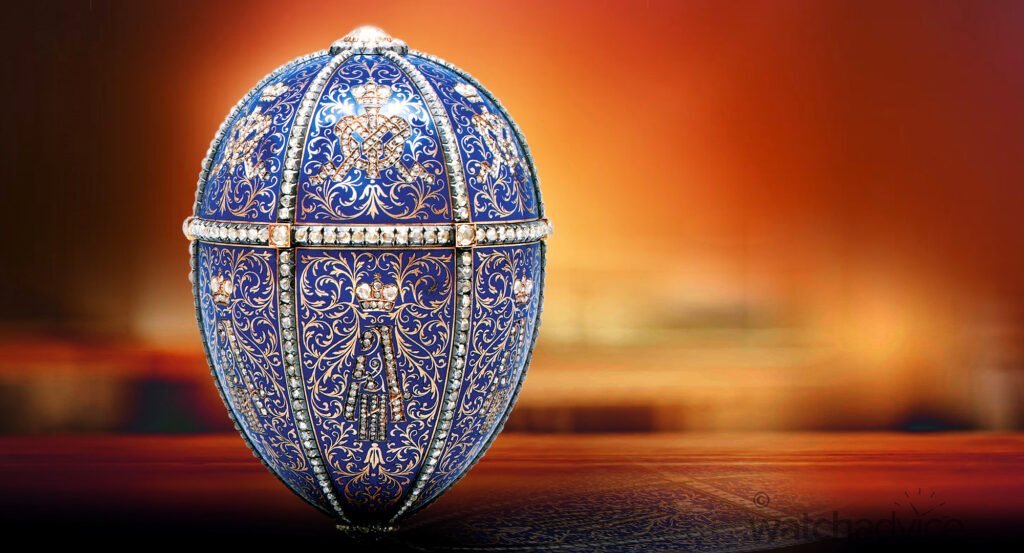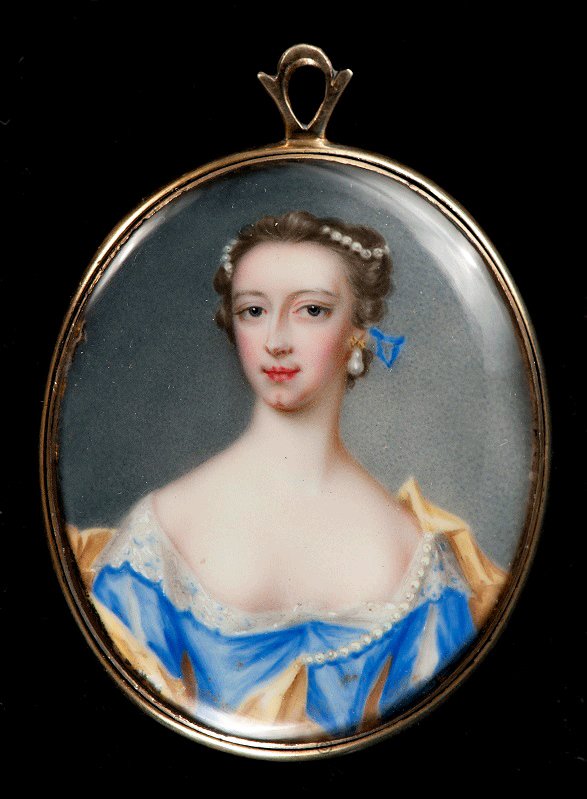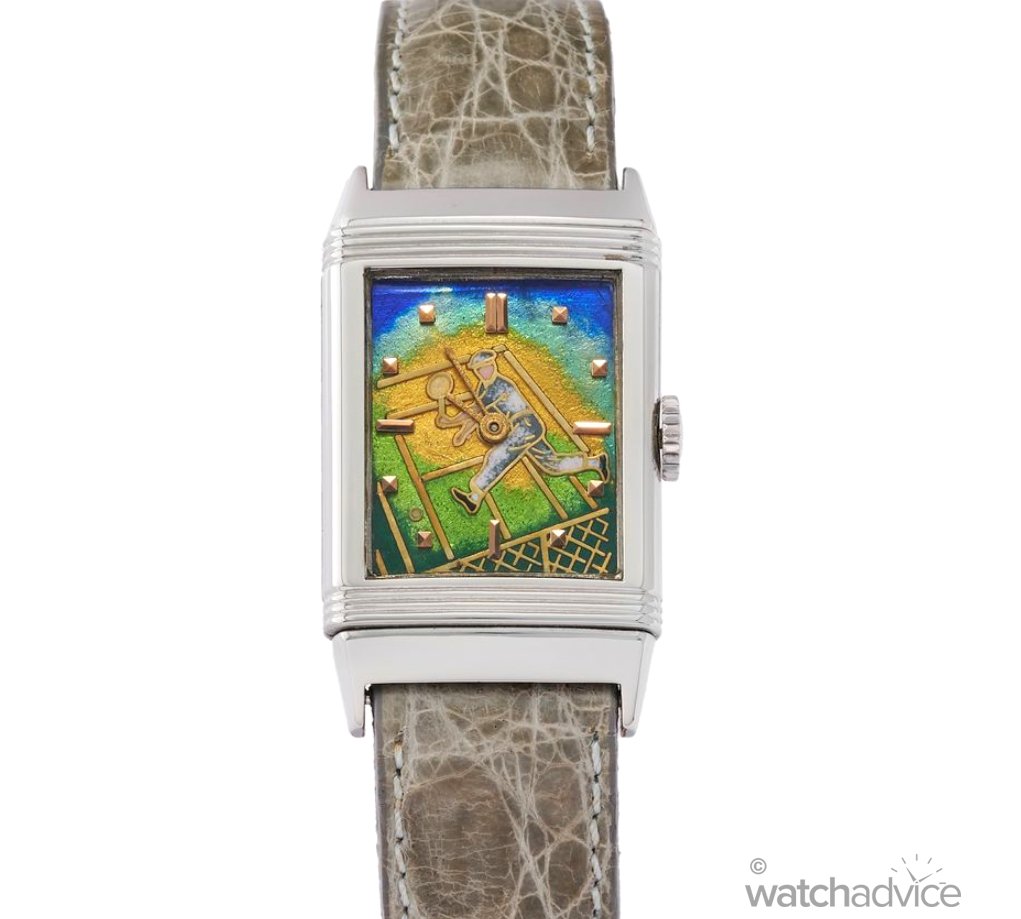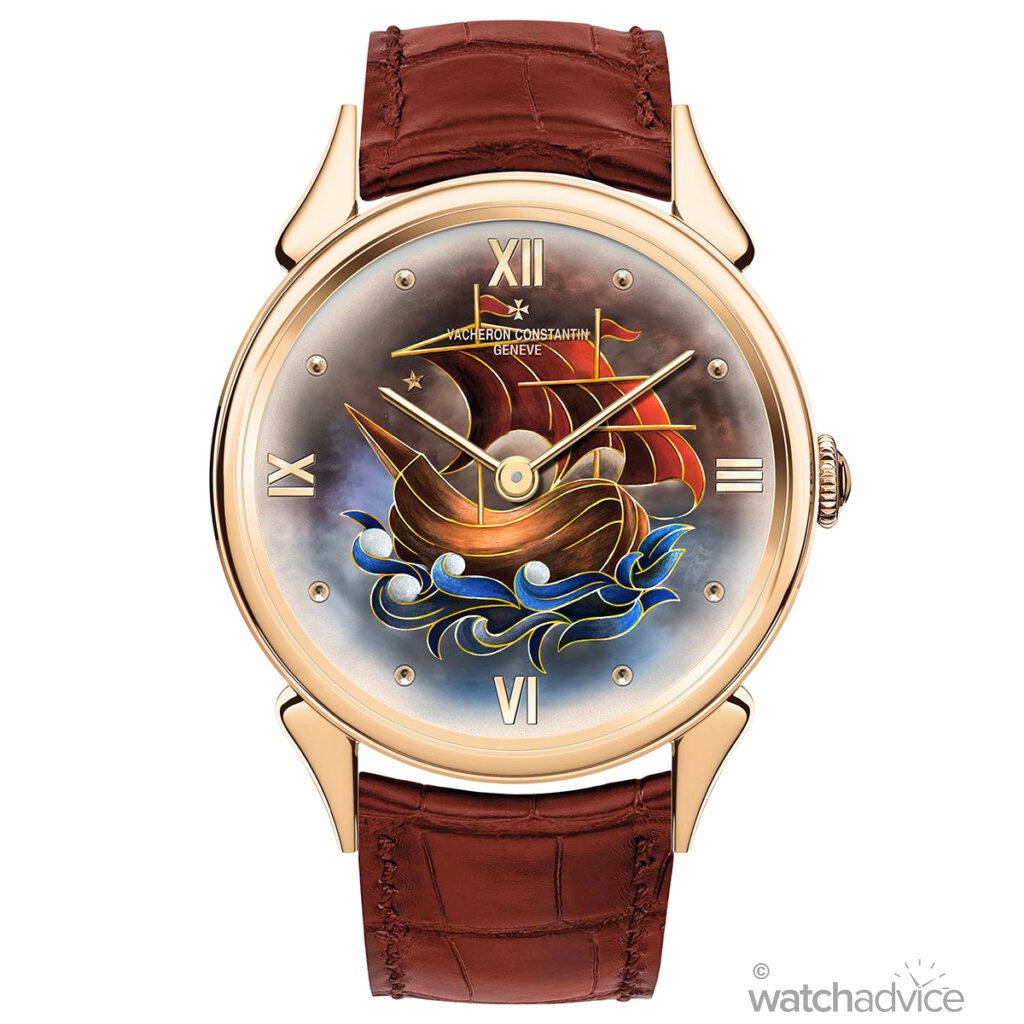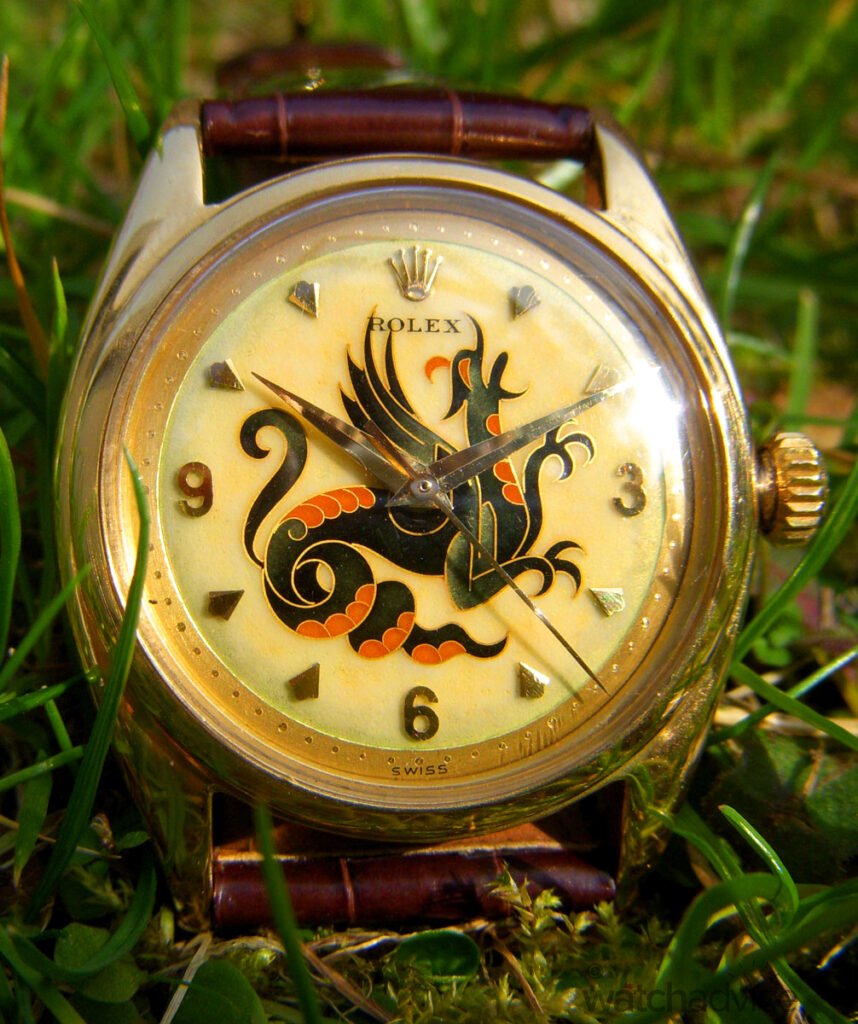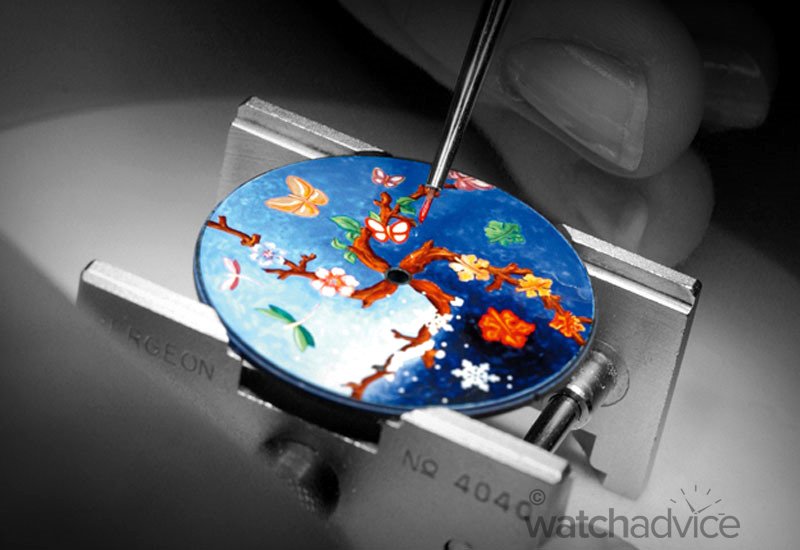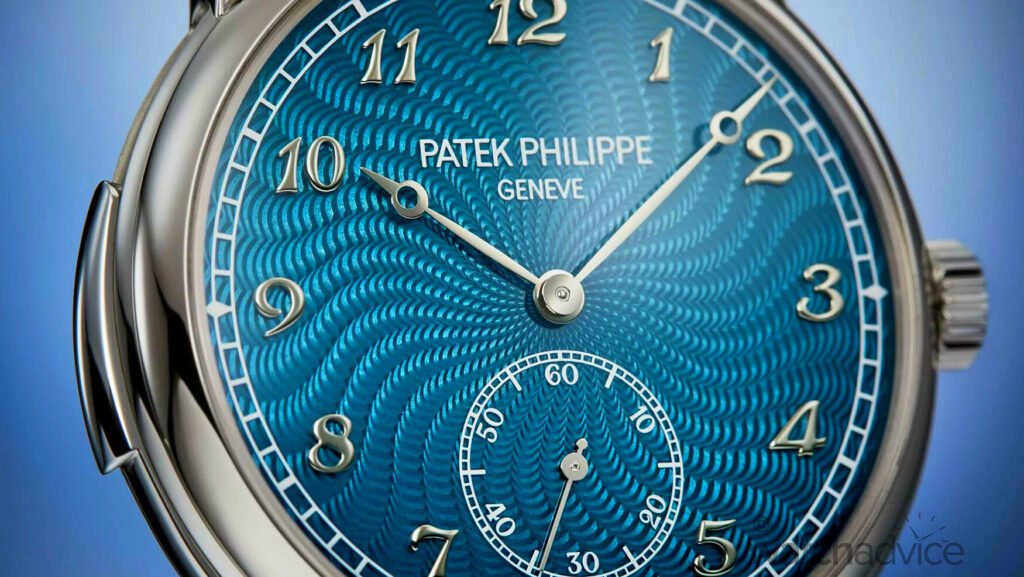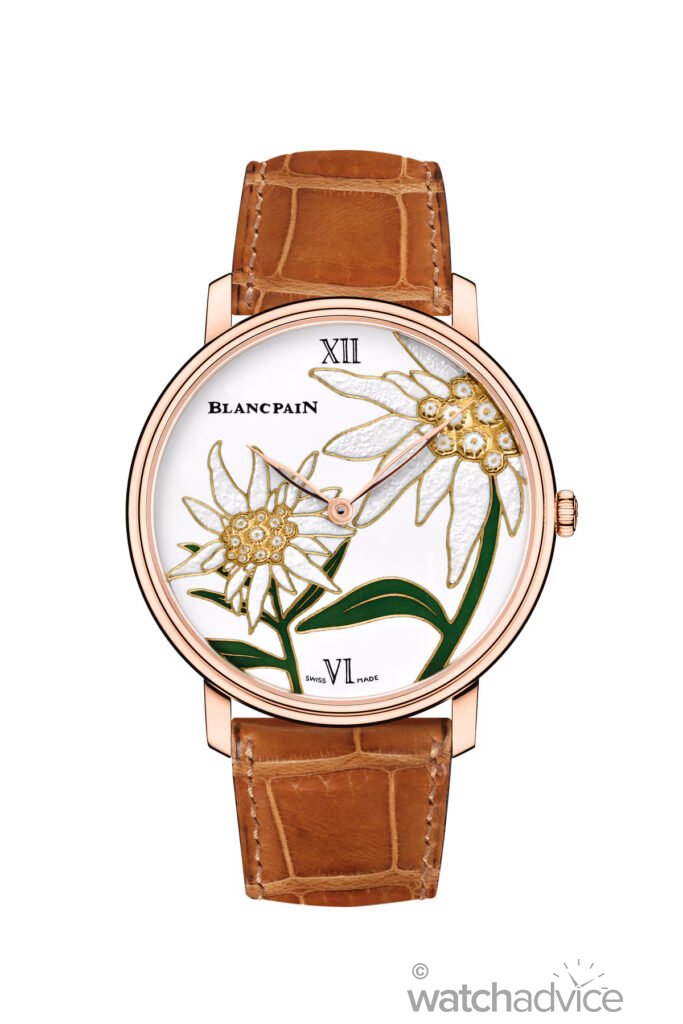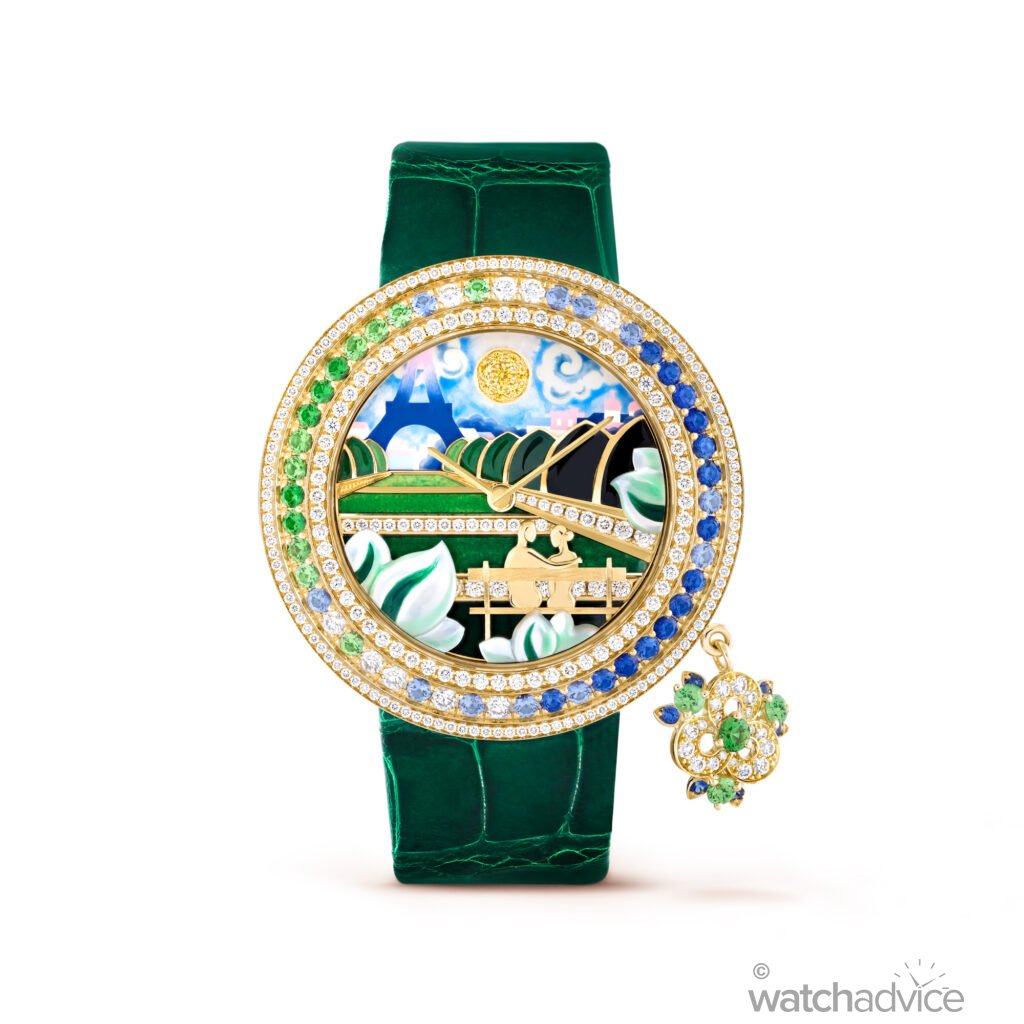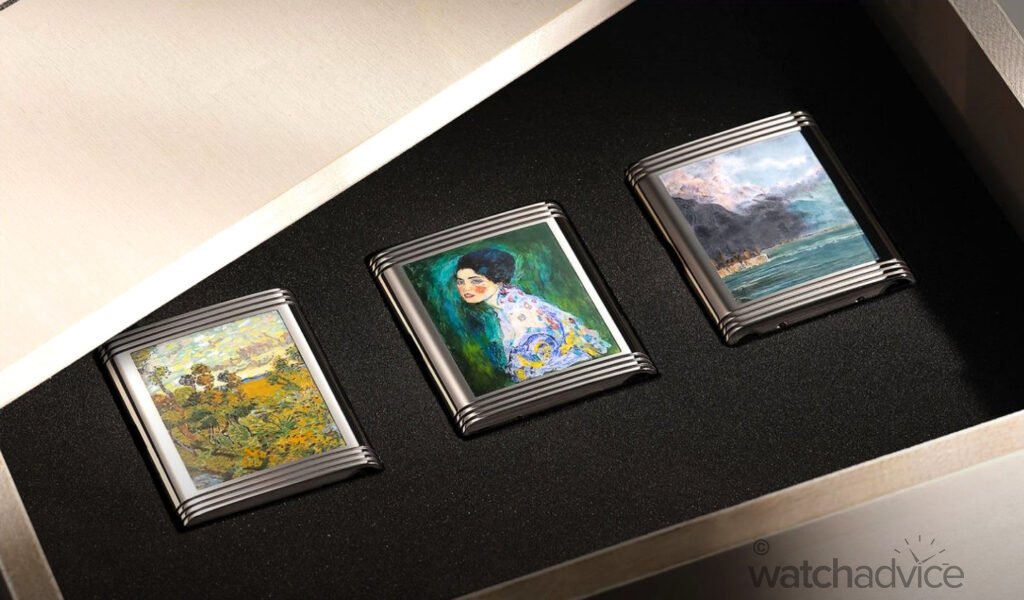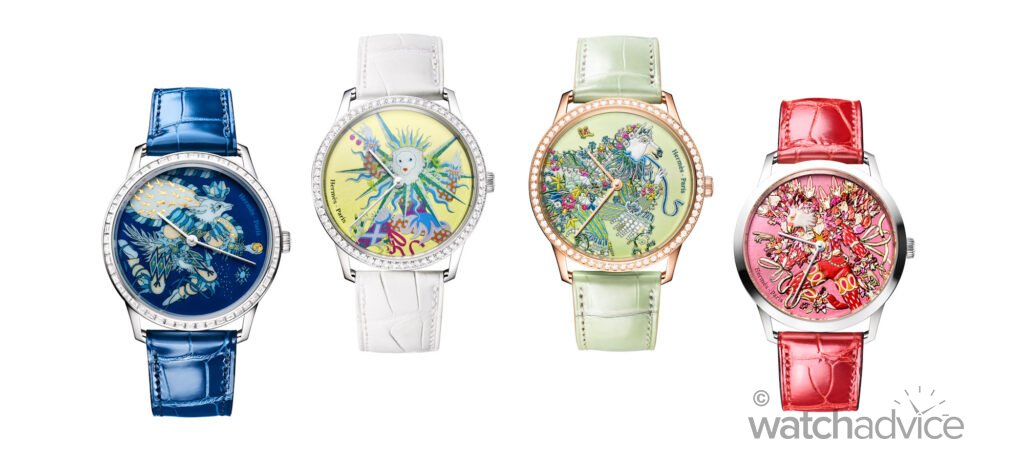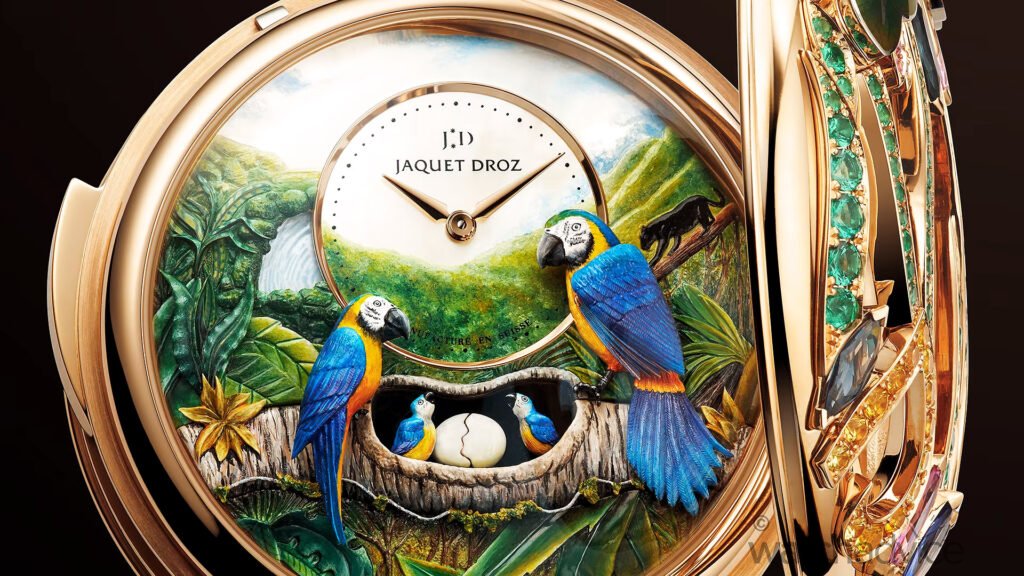In this latest series, we examine the artistic side of watchmaking and how brands still preserve the tradition of Métiers d’Art through various artistic expressions, in particular, enamelling.
Métiers d’Art translates to “art professions” and has been a part of watchmaking since its very beginning. Métiers d’Arts in the world of horology represent the very pinnacle of artisanal craftsmanship and artistic expression from the brands. Métiers d’Art is a tradition that dates back centuries and includes a range of techniques, such as engraving, enamelling, gem-setting and also guilloché.
The Latest Patek Philippe’s unique “English Garden” dome table clock in ‘Grand Feu cloisonné’ enamel
Each of these various techniques requires the artisan to have years of training, a high level of precision, and a masterful ability to be patient. The techniques are usually performed by craftsman who have dedicated their lives to perfecting the craft. To me personally, Métiers d’Art in the world of horology is more than just seeing the artistic side to watchmaking, it’s about continuing a long tradition that is often overlooked while also celebrating the cultural and artistic heritage that the various techniques in Métiers d’Art represent.
Unfortunately, only a handful of brands are still practising the techniques of Métiers d’Art and producing watches in modern-day watchmaking. This can be both a good and bad thing, in the sense that when there’s less of it, we tend to value it more. However, when there are fewer watches produced with beautiful artistic dials, it also means a very premium price tag and is hard to get a hold of. There is a reason why not many brands take up this side of horology, as it can be incredibly time-consuming. Creating an artistic dial takes precision, masterful ability and a lot of patience, more so than creating most mechanical timepieces. This is why when brands create Métiers d’Art timepieces, they are limited-edition pieces.

When it comes to high-end watchmaking, renowned brands like Patek Philippe, Vacheron Constantin, Jaeger-LeCoultre, and Blancpain incorporate Métiers d’Arts creations into their most exclusive collections. To put it simply, these aren’t just timepieces that tell the time but rather wearable artworks. However, the beauty of these creations lies in the fusion of high-end mechanical watchmaking and Métiers d’Arts. Where the highly-detailed craftsmanship of artists meets the precision of watchmakers to create watches that transcend haute horlogerie.
While, as stated earlier, many artistic techniques fall under Métiers d’Art, we want to highlight the technique of enamelling in this article.
What Is Enamelling?
The Métiers d’Art technique of enamelling has a millennia-long history. Enamelling is one of the most revered and intricate Métiers d’Art techniques in the world of watchmaking. Simply put, it involves fusing powdered glass to a metal surface by firing it at high temperatures, ultimately creating a glossy, glass-like finish that produces a luminous shine.
In the world of horology, enamel watch dials are among the most artistic dials you’ll find, bar actual miniature hand-painted dials. Enamel dials are still painted; however, the finish is where they differ from a “hand-painted” dial, as the process of enamelling gives the artwork a “glossy” shine finish. These dial creations are some of the most beautiful dials you’ll ever come across in the world of horology. If you don’t think so, have a look at the bottom of this article for some of the modern artistic masterpieces created by brands today.
The watch dials created through the enamelling technique have rich colours, achieved from multiple layers of paper-thin coats of enamel, as each coat provides another shade to the colour. Enamelling is such a hard process and requires an artisan with many years of experience under their belt because the enamel is a very delicate material. As mentioned earlier, the artisan achieves the rich colour required for the artwork by painting several layers and firing the enamel in a kiln after each layer is done. With each separate firing that it undergoes, the enamel work is at risk of cracking and also becoming dull (losing colour and vibrancy).
What makes enamelling on watch dials all the more impressive is that the dials are small compared to other enamelling works, such as jewellery (Fabergé eggs, brooches), Chinese cloisonné vases, bowls, ornate wall plaques, and decorative panels, just to name a few. Even though watch dials are much smaller than these other enamel works, they still produce the same beautiful artistic effect while also showcasing the complexity of the work.
History Of Enameling
In the mid-1600s, miniature enamel portraiture was extremely popular, especially in France. Officers and soldiers fighting battles far away from home would carry portraits of family or loved ones as a form of a personal memento, much like soldiers in the modern world would carry photos in their wallets. Miniature enamel protraiture’s were also used as a way of introduction to potential suitors.
Blancpain tells a story in this regard: “Imagine yourself as a nobleman with a beautiful eligible daughter 500 years ago. Pleasant thought isn’t it? Of course, you have an important task before you: finding her a suitable match. Naturally, your position, wealth, and even terms of a dowry would be known or could be easily presented in a letter. But what about her appearance? Tragic that mobile phone selfies won’t come along for another half millennium. The solution: a miniature portrait in enamel to accompany a letter.”
Miniature enamel paintings were really popular for various reasons up until the invention of photographs. This art form made its way into watchmaking sometime between the invention of the mainspring and the invention of the balance wheel. Blancpain states that “If a watch lacked value as a timekeeping instrument, adding elaborate decoration, most often in the form of enamel painting, served to bestow importance upon the timepiece. Thus, enamel painters took root in Geneva and established the grand Swiss tradition of watch enamelling.“
Five Historic Artistic Enamel Dial Timepieces
Patek Philippe – “The Island” Ref. 2482
Patek Philippe is a brand renowned for creating enamel artistic timepeices. One of their vintage works is the Ref 2482, which depicts the image of an island with sand beaches and trees. Titled “The Island”, ref. 2482 falls into the brand’s OAK collection, which exhibits 12 Patek Philippe watches and clocks from the brand’s Rare Handcrafts collection. All 12 models are extremely rare one-of-a-kind timepieces. This timepiece has been created using the Cloisonné enamelling technique (explained below).
Jaeger-LeCoultre – Reverso with cloisonné enamel dial Circa. 1940s
Another brand with a rich history with Métiers d’Arts is Jaeger-LeCoultre. One of their early works in the 1940s is this Reverso, which depicts a tennis player on clay/ grass courts. The artisan work was carried out by the well-known firm Stern Frères. The Reverso timepiece is actually one of Jaeger-LeCoultre’s most used timepiece for artistic expression, with modern models still being used today for creating stunning enamel works.
Omega – Closonnè Dial Air Force Circa. 1950s
The Omega Closonnè Dial Air Force created in the 1950s came with a 18k pink gold case, which perfectly complemented the enamel painting on the dial. This painting depicts planes in the sky on a coastal background. The dial was created with the artisan first tracing the outline of the motifs with thin gold wire, after which several layers of enamel are then applied to achieve the desired colours. This process is also known as Cloisonné enamelling (read more below).
Vacheron Constantin – Les Cabinotiers Cloisonné Enamel The Caravel Circa. 1950s
Vacheron Constantin is another brand that has vast in-house experience with making enamel artistic creations. While this model may not have been in-house, it showcases the brand’s early history in enamel dial watchmaking. The Les Cabinotiers Cloisonné Enamel The Caravel shows an image of a ship sailing through what looks to be rough seas. This timepiece was a one-of-a-kind creation that featured a Cloisonné Enamel dial created by Atelier Anita Porchet.
Rolex Dragon Cloisonné Ref. 6098 Circa. 1954
This Rolex Dragon Cloisonné is an incredibly rare timepiece. The photo above is from John Goldberger, who states that this is reference 6098. The dial was once again created by Stern Frères. Done through the Cloisonné enamelling technique, thin gold wires were used to outline the shape of the dragon, after which enamel was poured to achieve the desired colour effects.
The Different Techniques of Enamelling
Grand Feu Enamelling :
Grand Feu, also known as “great fire” enamelling, is the traditional way of carrying out enamel work. The technique requires the artisan to create multiple layers of enamel, which are then applied to a metal surface and fired at very high temperatures in a kiln. This firing causes the enamel to fuse to the metal, ultimately resulting in a glossy and smooth surface that is resistant to fading and scratching. This is the process of enamelling that is used by most high-end watchmakers.
Fumé Enamelling :
The process of Fumé enamelling, also known as “smoke” enamelling, creates a unique gradient effect on the dial, whereby the enamel transitions from darker to lighter shades of colour. The technique of creating Fumé dials involves the artisan varying the thickness of the enamel layers through controlled firing techniques. The end result is a smoky dial, which not only brings complexity to the dial but also aesthetic beauty. H.Moser & Cie is well-known for creating masterpiece timepieces with Fumé dials.
Cloisonné Enamelling :
Cloisonné enamelling is a technique that involves creating intricate designs by placing thin metal wires (cloisons) onto a metal surface, which then form compartments. These compartments are then filled with enamel and fired to achieve the desired colour depth and effect. Through the Cloisonné enamelling technique, detailed and colourful patterns can be achieved, as the thin metal wires can be constructed to any shape required. Floral, pictorial motifs can be created this way, which many modern brands have certainly done.
Champlevé Enamelling :
The process of Champlevé enamelling requires the metal surface or “backing” to be first carved, engraved, or etched, which creates recessed areas in which the enamel can be filled. After the enamel is placed, the piece is fired. The surface is then polished to show a smooth enamel set within its metal “recessed” boundaries. The technique of Champlevé enamelling produces a textured surface that has vibrant enamel contrasting against the metal.
Plique-à-Jour Enamelling :
The technique of Plique-à-jour, which means “letting in daylight”, is a more complex version of the Cloisonné enamelling technique. The Plique-à-jour enamel work is created without a “backing”, which produces artwork that has a result of a stained-glass effect. The process of Plique-à-jour enamelling is done by applying enamel to cells that are created by metal wires. After the firing process, the backing is then removed, which leaves a translucent enamel that allows light to pass through.
Flinqué Enamelling :
This enamelling technique involves the process of applying transparent/translucent enamel over an engraved or guilloché metal surface. This engraved or guilloché surface decorative pattern is the core essence of the dial, with the transparent Flinqué enamelling enhancing the visual imagery of the pattern with a shining effect that plays with light and texture.
Paillonné Enamelling :
The process of Paillonné enamelling uses a small piece of metal foil (paillons) that is added to the enamel. These metallic foil pieces are done in a decorative matter and then covered with translucent enamel (like the Flinqué enamelling technique). After the enamel has been added and fired, it fuses with the foil, which produces a beautiful glittering effect that brings a level of luxury and aesthetic to any design.
Modern Artistic Enamel Dial Creations
Blancpain – Grande Décoration
“A marriage of technical refinement and aesthetic purity, Blancpain’s ultra-slim watch is set apart by its elegance and the technical accomplishments needed to create it. The dial is created using a variety of Métiers d’Arts techniques, including enamelling. “
For more information, click here!
Piaget – Dragon & Phoenix Collection
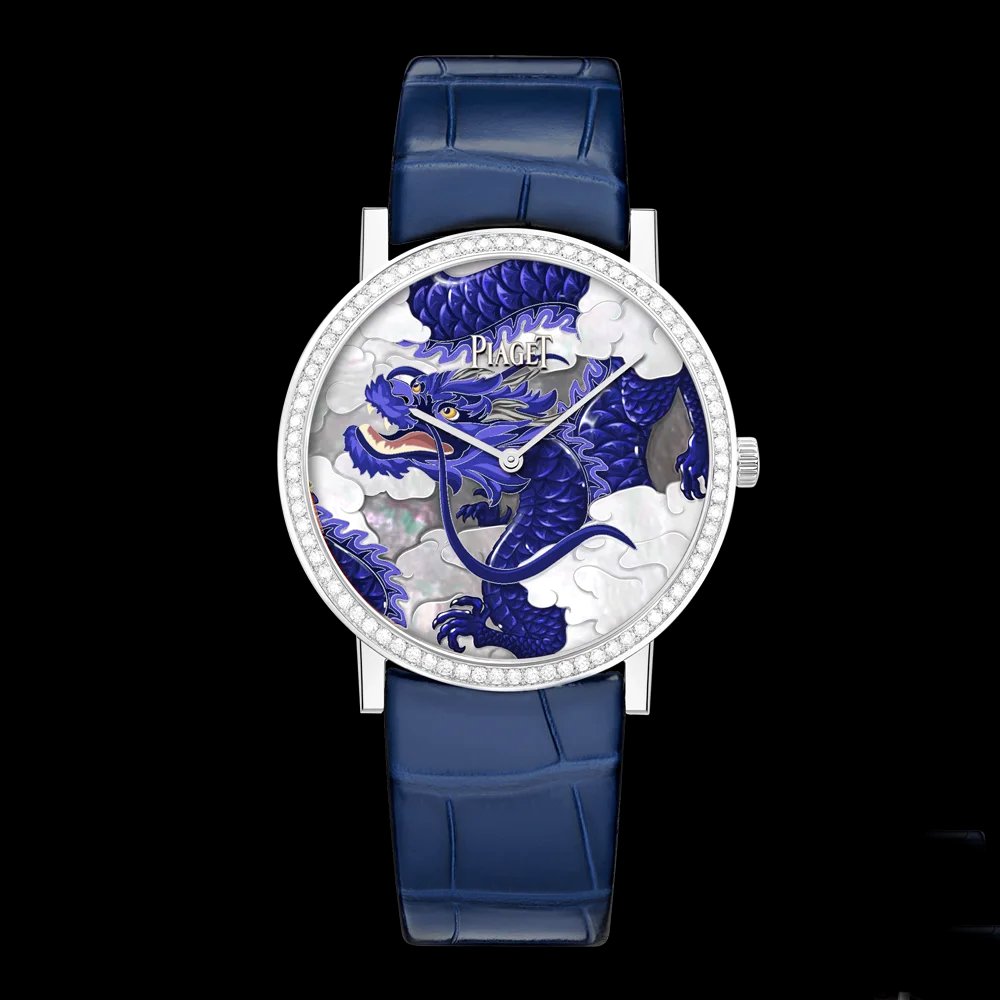

“In 2012 on the occasion of the lunar new year, piaget welcomed the year of the dragon with a special capsule collection of exceptional timepieces. As the 12-year cycle begins again, that spirit of daring creativity, remarkable sophistication and unexpected beauty is awakened once more for a special lunar new year capsule collection dedicated to the dragon & phoenix magnetic energies.” Piaget’s portrayal of Dragon and Phoenix displays the virtuosity of Porchet’s cloisonné enamelling technique.
For more information, click here!
Van Cleef & Arpels – Charms Romance Parisienne Promenade watch
“Born out of a love story, Van Cleef & Arpels has always paid homage to the poetry of romances. Through the Charms Romance Parisienne collection, Van Cleef & Arpels offers a new interpretation of the three stages of love in the heart of Paris, the city of romance. The Charms Romance Parisienne Promenade watch tells of the third and final chapter in a love story. On a walk along the Champ de Mars, the lovers’ blossoming feelings are revealed in the light of day.” The timepiece features various Métiers d’Arts techniques, including gem-setting, miniature-painting and champlevé enamelling.
For more information, click here!
Voutilainen – Starry Night Vine
The Starry Night Vine is the end product of two of the greatest artists in their fields: Mr. T. Kitamura (contemporary lacquer artist) and Mrs. Anita Porchet (contemporary enamel maker). “This masterpiece shown here; sky above of vineyard; use techniques of lacquering which takes far more than hundreds of hours of work to complete the dial and bridges. The beautiful vineyard with rich colors is made with email cloisonné techniques.”
For more information, click here!
Jacquet Droz – Bird Repeater “300th Anniversary Edition”
The Jacquet Droz Bird Repeater “300th Anniversary Edition” features a minute repeater, along with the dial showcasing multiple bird animations, eggs hatching and the river in the background coming to life. This stunning display of artistic masterpieces combines all the Métiers d’Art techniques known by Jacquet Droz, including hand-painting and enamelling.
For more information, click here!
Jaeger-Lecoultre – Reverso Tribute Enamel Hidden Treasures
The Reverso Tribute Enamel Hidden Treasures are a trio of timepieces that celebrate the extraordinary work of three masters of Modern Art: Gustave Courbet, Vincent Van Gogh, and Gustav Klimt. Artisanal skills such as grand feu enamel, miniature painting, and guilloche were showcased in the Reverso Tribute collection, which closely mimicked the 1930’s original models by the simplicity of the dials, which is now enhanced by the guilloché backgrounds.
Read our full article on these “Hidden Treasures” here!
Jaeger-Lecoultre – Reverso “Precious Flowers”

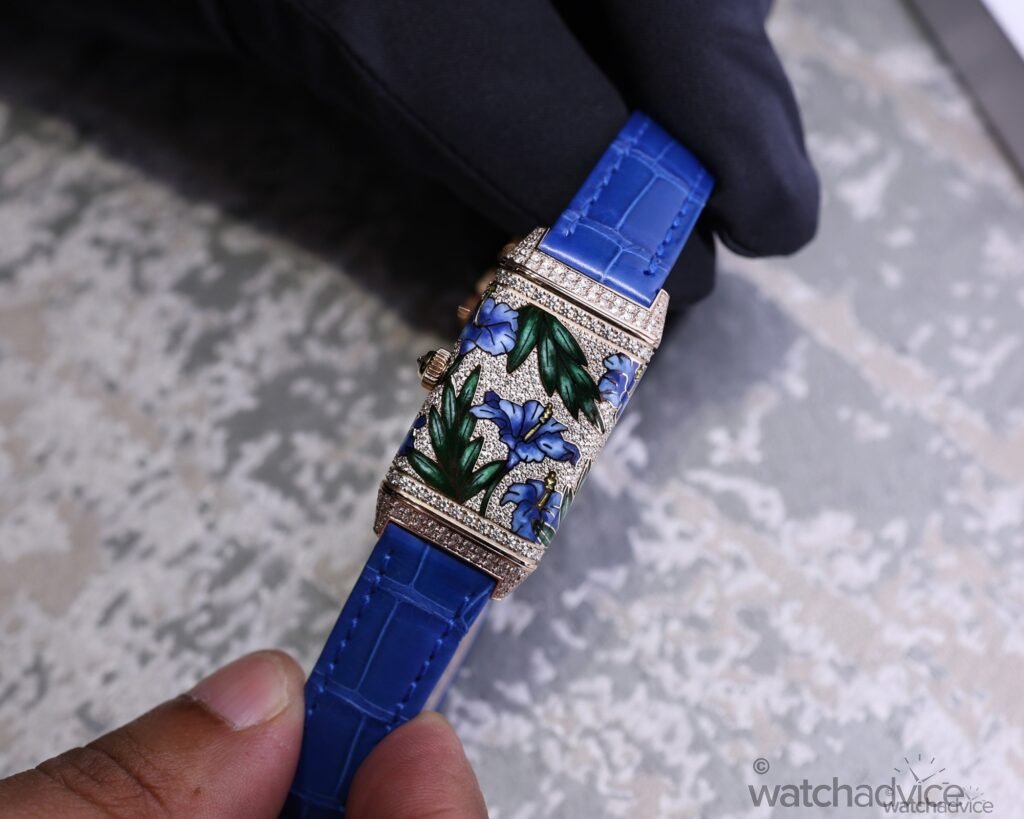
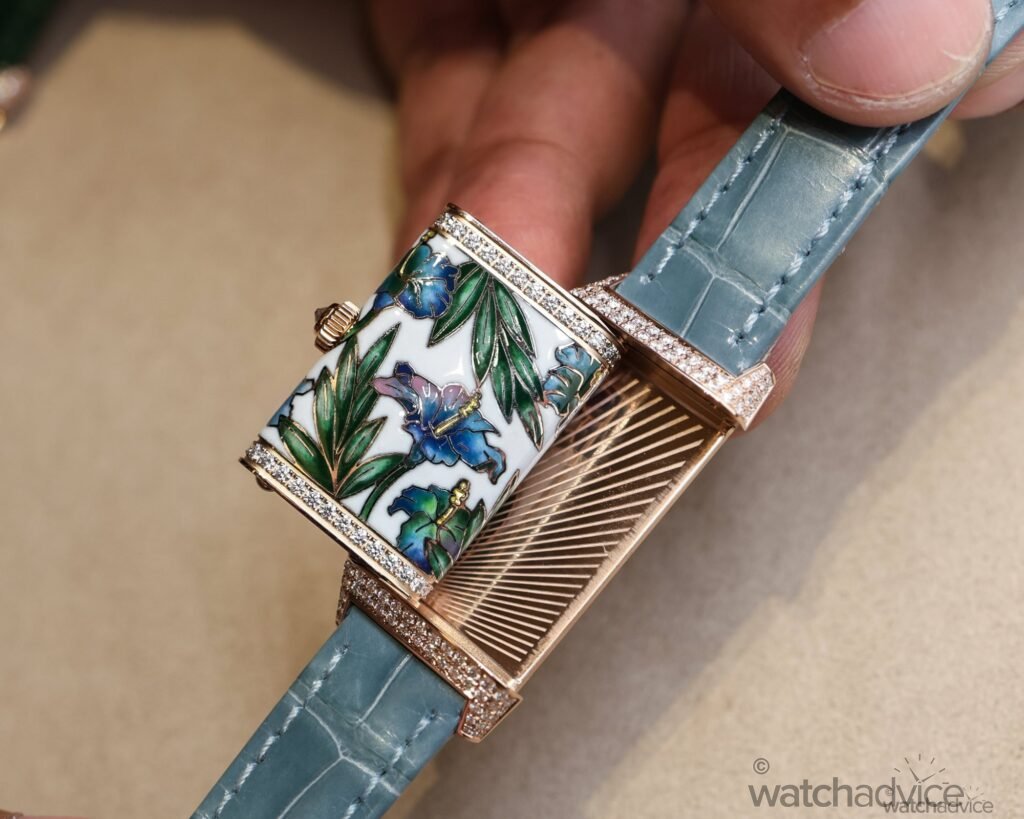
Released earlier this year (2024), these three new timepieces showcase the spirit of Tropical Art Deco, which made its appearance in the 1930s. To display this theme on the timepieces, the Reverso watches are characterised by sleek lines of Streamline Modern architecture, which is set against a backdrop of lush vegetation and vividly coloured flowers. These timepeices actually use three forms of enamalling: Champlevé Enamelling, Paillonne enamelling and Grand Feu enamelling!
Read our full article on Jaeger-LeCoultre’s Reverso “Precious Flowers” here!
Hermès – Slim d’Hermès Le Sacre Des Saisons
Created by exceptional artisans, the all-new Hermès Slim d’Hermès Le Sacre des saisons showcases nature’s bounty and a playful animal world. A total of four timepieces make up the new Slim d’Hermès Le Sacre des saisons collection, with each watch representing a different season: Winter, Spring, Summer, and Autumn. The artisans make use of various enamelling techniques, including paillonné enamelling.
Read our full article on Hermès Slim d’Hermès Le Sacre Des Saisons here!
Vacheron Constantin – Métiers d’Art – Tribute To Explorer Naturalists – Detroit De Magellan
“Inspired by art, history and culture, the Tribute To Explorer Naturalists collection set sail for the scientific discoveries of naturalists who travelled the world’s oceans aboard the english ship Beagle in the early 1830s. The remarkable mix of hand-engraving and enameling reveals the double aesthetic of the story.” Arguably one of me favourite Métiers d’Art timepieces due to it’s rich colours and imagery.
For more information, click here!
Ematelier – Sprezzatura Cloisonné Atlas
Ematelier specialises in creating unique Métiers d’Arts dials. They have perfected the various techniques of enamelling, allowing them to create stunning displays of artwork like the one above. This particular model is a handmade Cloisonné enamel dial that uses twelve different enamel colours with 0.1 mm gold ribbon for partitions.
For more information, click here!
Jacquet Droz – Pocket Watch Automation – Parrot Repeater
While it’s not a wearable watch, it certainly deserves an honourable mention. Jacquet Droz’s Pcoket Watch Automation Parrot Repeater is one of the most detailed, complex and quite simply stunning timepieces (pocketwatch) I’ve seen. The brand states “It took a whole year and no fewer than ten Jaquet Droz artisans to bring this unique piece – the Pocket Watch Automaton – Parrot Repeater – to life. This extraordinary task required close coordination between the various Ateliers in La Chaux-de-Fonds, fostering a sense of devotion and pride, not to mention a great deal of emotion. For Jaquet Droz, the piece represents the peak of its expertise.” The timepiece features gem-setting, engraving, enamelling and miniature painting techniques!
For more information, click here!
Métiers d’art, and in particular, the art of enamelling, represents the very pinnacle of watchmaking. The ancient technique, which has been honed and improved over centuries, creates timepieces that have unparalleled beauty. The flexibility of enamelling allows it to be combined with other Métiers d’art techniques such as engraving and guilloché. The technique can transform a watch dial into miniature canvases, showcasing various scenes and stories the brand wants to portray. Ultimately, what these enamel dials do is create artwork for your wrist and become a testament to the skill, patience, passion, and artistry of haute horology!




